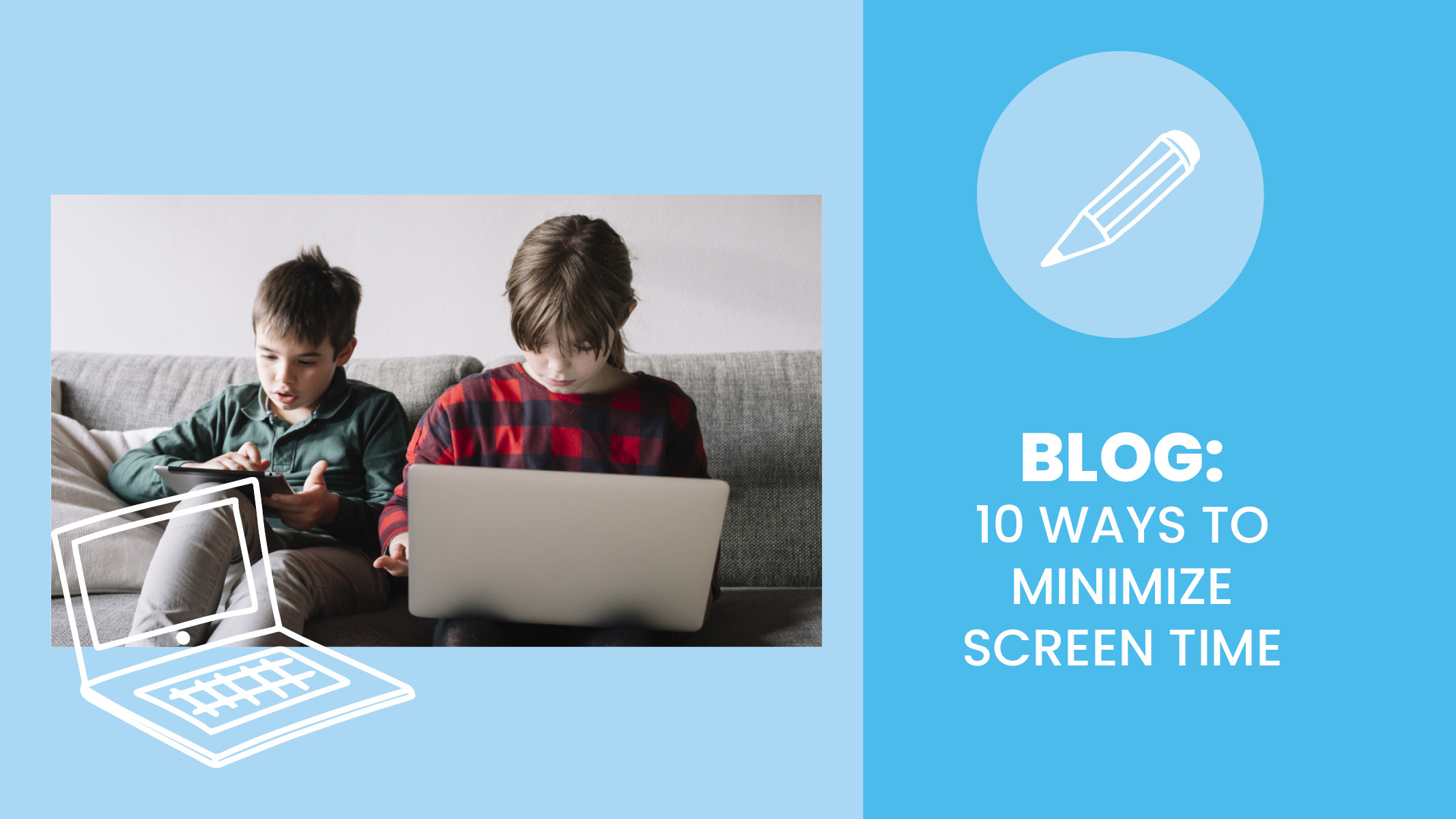How much time do you think your kids spend in front of a screen every day? According to the CDC, kids ages 8-18 years spend an average of 7.5 hours in front of a screen every day. It’s easy to be overwhelmed by that number, and if you feel that way, you’re not alone. But believe it or not, lowering that number is easier than you think.
Where do you start? Well it’s important to know where your kids should be with their screen time. Here are the American Academy of Pediatrics' newest recommendations for children’s screen usage:
Under 18 months: Avoid screens (other than video-chatting).
18-24 months: Limit screen time to only introducing them to occasional educational pieces.
2-5 years: Limit screen time to 1 hour per day while co-viewing media.
6+ years: No set limit, but place consistent limits on time using media, types of media, and where media usage is taking place.
Tweens and Teens: No set limit but engage in conversations with your kids about their media use and who they are communicating with.
Keep in mind, these numbers and recommendations are guidelines. Remember: the overall goal is to build a healthy relationship with screens. Like all things in life, moderation is key and too much of one thing isn’t healthy. It’s okay if the recommendations seem out of reach because cutting back on screen time is a process, and it won’t be something that happens all at once. So now that you know the numbers, what can you do to start cutting back on screen time?
Take small steps to create long-term changes. Does your child constantly reach for their phone or tablet after school? If so, try cutting back 1 hour each week to start. It’s not realistic to ask your kids to cut out screen time completely, but making small changes is the best way to create long-term behavior change.
Make a screen-free sleep zone. Having devices available in the bedroom or sleep zone can interfere with quality sleep. Not sleeping enough at night makes it hard to have the energy to do activities throughout the day. Keep as many screens as you can out of the bedroom, and by placing all screens in a central location or out of sight, you can better monitor the time spent in front of them.
Create a screen time schedule. Once you've established a screen time limit, sit down with your children every week and let them figure out how they plan to use it. A good rule of thumb for everyone is to avoid using screens during meals or within an hour of bedtime. Otherwise, honor the agreement.
Mind your own screen time. What you do, your children will do. If you spend a chunk of your day sitting on your phone or in front of a screen, you can't expect to pry your kids loose from their screens. While you may need your phone with you for work, try to avoid scrolling social media or playing games too much. You can practice setting limits to apps or screen time on your own phone and after some time, have a conversation with your family about the limits, how it’s going, and the difference you’ve seen. Modeling this healthy habit and discipline may encourage your kids to do the same. You can also practice healthy habits in front of your kids such as trading out your phone for a book which will show your child that books can be just as entertaining.
Encourage other activities. If it’s time to take away a device, offer an activity that is even better or more enticing to your child! You might say, “Tablet time is over now, but I’m so excited to play a card game with you!” Reading, doing puzzles, playing board games, playing outside, and spending time with friends or family are a few of the healthy activities your family can engage in instead of being on a device. By offering new and exciting activities, you can keep your child entertained without a screen.
Consistency is key. Chances are, cutting back on your child's screen time will cause some conflicts. Stay calm and remind your child why these limits are important for their health. In the end, you and your child will reap the rewards of better sleep, less eyestrain, and improved mental well-being.
Motivate your kid to be active. Screen time can be addicting (we’ve all binged a show in a day). However, making sure to plan a time to get off screens and do something active keeps your child moving. Children enjoy doing activities, especially if you keep it as a habit from an early age. Show your support for choices to be active by providing transportation. Or try being active together and go rock climbing, hiking, or just for a walk around the neighborhood. Find more tips on helping kids find joy in being active here.
Encourage activities that involve socializing. Look for activities and clubs that engage your child socially. Much of the socializing that used to happen is lost today with the use of social media and cell phones. Encourage outings with other children of similar ages, such as school or church groups, camps, volunteer work, or plan get togethers with family or friends. For teens, encourage them to interact with friends without their phones. They can play games or sports, enjoy the outdoors, or enjoy creative time by painting or drawing.
Do it as a family. You'll be more likely to get your child’s buy-in if you come up with family screen time guidelines all together. As a group, you can come up with a screen time guide for the house. Here are some of our favorite suggestions:
- Meal time isn’t screen time. Put away the screens during meals, no matter where you’re eating.
- Homework and chores take priority over screens.
- Turn screens off one hour before bedtime.
- Bedrooms are screen-free zones. Keep the screens in a communal area.
Encourage mindfulness when using devices. Most kids and teens think they can multitask well and regularly consume multiple media platforms at a time. They may respond to a text message while watching a video and so on. While they’re using devices, encourage your child to consider what they remember from the conversations and media that they’re consuming. Were they truly present? Did having their phone readily available to answer a text message make their homework a quicker task? Questions like these can help kids reflect on their device usage and the role screens play in their lives.
Remember that simply setting limits won't always go over well, and that’s why it’s important to include your kids in the decision-making process. Let them see that they can choose when and what they want to watch as long as it is within the established limits. By instilling a healthy relationship with devices as early as possible, you will provide a great foundation for your child to continue with in the future.
For more quick tips on ways to minimize screen time, check out this Cheat Sheet for Caregivers on Handling Screen Time at Home.
Ready for More? You Might Also Like:
How to Relax and Recharge with a Take a Break Basket
Mindset Matters: Building Growth Mindsets in Kids
Upgrade Your Encouragement! 10 Phrases to Mindfully Praise Kids


